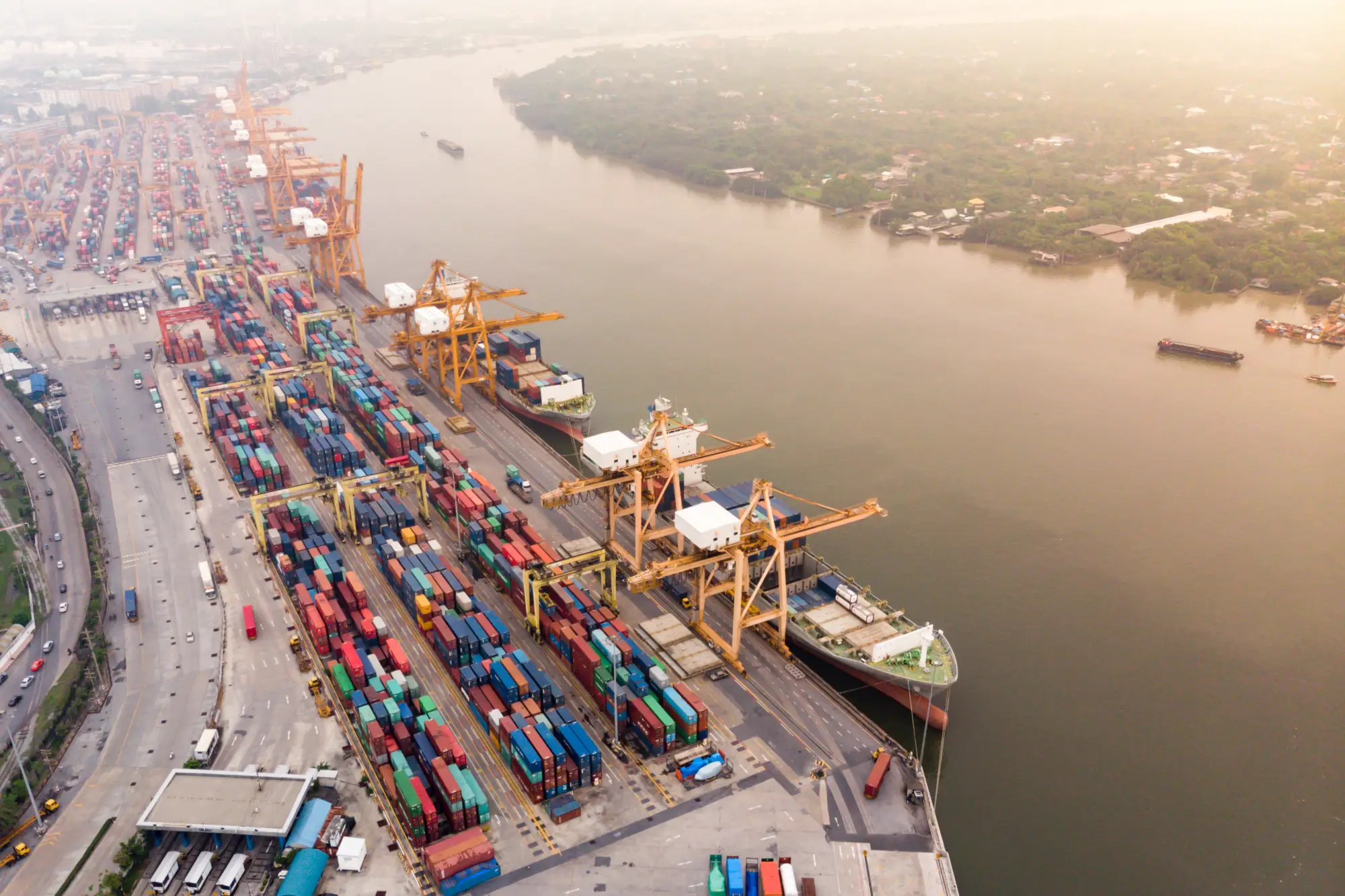Global commerce is replete with regulatory requirements and meticulous checks, all making importing goods to the U.S. a challenging experience if not handled properly. This reality makes understanding and preparing the necessary documents for freight forwarders much more than just a matter of compliance, requiring implementing smooth and efficient import processes to avoid unexpected delays or legal hurdles.
Among numerous importing documents, there are five that stand as pillars supporting this process. Each of these documents serves a unique purpose, ranging from certifying the legality and compliance of the goods to ensuring the correct calculation of tariffs and duties. Properly managing this paperwork is a guarantee of successful hassle-free importing to the U.S.
Proper Documentation Is a Key to Seamless Goods Flow
When importing products to the United States, customs compliance serves as a bridge between different nations’ regulatory frameworks, ensuring that the exchange of goods complies with all relevant laws and standards. At customs checkpoints, where the accuracy and completeness of documentation are especially scrutinized, adequate paperwork expedites the customs clearance process, ensuring a smooth transition of goods across borders.
The repercussions of improper documentation are both immediate and far-reaching. Incomplete or erroneous paperwork can lead to significant delays in customs clearance. These delays often come with financial penalties and increased storage fees and may even culminate in the goods being returned or destroyed. Such setbacks can be particularly detrimental for time-sensitive shipments, where delays can disrupt the entire supply chain. This domino effect can cause a cascading impact, potentially damaging relationships with clients and tarnishing the importer’s reputation.
Improper paperwork can also hint at non-compliance with import regulations, leading to more severe legal consequences. This often involves financial costs and can result in legal entanglements, further complicating the import process. In the worst-case scenario, consistent issues with documentation can lead to an importer being flagged by customs authorities, resulting in more frequent and rigorous inspections in the future. In turn, this can dramatically affect the importer’s ability to conduct efficient and profitable operations.

Mandatory Paperwork
There are certain documents that are integral to the U.S. import system. Each of these indispensable documents serves a unique and crucial role in the importation process, ensuring compliance, accuracy, and efficiency. Let’s take a closer look at them:
Commercial Invoice: This is arguably the most critical document in international trade. The commercial invoice is a legal document between the seller and the buyer that describes the sold goods and terms of sale and provides information required for customs clearance. It includes details such as the description of the goods, their value, the seller’s and buyer’s names and addresses, and delivery and payment terms. Customs authorities use this document to assess duties and taxes, making its accuracy and completeness paramount.
Bill of Lading (BOL): The Bill of Lading is a contract between the owner of the goods and the carrier. There are two types: a straight bill of lading, which is non-negotiable, and a negotiable or shipper’s order bill of lading. The BOL serves as a receipt for the shipped goods and outlines the terms of delivery, making it essential for resolving any disputes about shipment and delivery. It contains information about the nature, quantity, destination, and consignee of the goods.
Packing List: Complementing the commercial invoice, the packing list details the contents of the shipment and provides information about the weight and dimensions of each package. This document is crucial for logistics providers to plan for space and weight requirements and for customs officials to verify the cargo. It is also used for checking the shipment upon arrival to ensure everything listed has been received and is in good condition.
Customs Declaration Form: When goods arrive in the U.S., customs officials require a declaration form. This document provides information about the nature of the goods, their origin, and their value. It’s essential to determine whether the goods are permissible and what duties and taxes apply. Accuracy in this form is crucial to avoid legal issues and penalties.
Arrival Notice: Issued by the carrier, this document notifies the consignee of the arrival of the goods. It contains information about the shipment, including the vessel’s name, the voyage number, and the date of arrival. It’s essential for the consignee to know when to expect delivery and prepare for the receipt and customs clearance of the goods.
Certificate of Origin: Some goods entering the U.S. require a Certificate of Origin, which is a signed declaration from the manufacturer about where the goods were made. This document is important for determining duty rates and eligibility for import under specific trade agreements or regulations.
As already stated, each of these documents is integral to the import process. Altogether, they ensure that goods are correctly classified, valued, and are in compliance with U.S. and international laws. Improper handling of these documents can lead to delays, additional costs, or legal complications. Importers must give these documents the attention and accuracy they demand to ensure successful and compliant international trade.

Tips to Simplify Your Import Paperwork
Proper handling of import documentation is a must for a seamless international shipping process. It requires attention to detail, organization, and understanding of regulatory requirements. Here are some tips to ensure that your documentation handling is as smooth and error-free as possible:
Be Detail-Oriented: Ensure that every piece of information on each document is accurate and consistent across all documents. Pay special attention to quantities, descriptions, values, and the parties involved. Inconsistencies can lead to delays or denials at customs.
Stay Updated on Regulations: Trade regulations are dynamic and can change frequently. It’s crucial to stay informed about the latest customs regulations and trade agreements that may affect your shipments. This knowledge helps in preparing compliant documentation and avoiding costly penalties.
Organize and Digitize Documents: Keep your documentation organized. Utilize digital tools for storing and managing your documents. Digital copies can be easily shared with relevant parties and are less prone to loss or damage. However, always ensure you have backup copies in case of technical failures.
Understand Your Responsibilities: Know what your responsibilities are under Incoterms (International Commercial Terms). These terms define the responsibilities of buyers and sellers in international transactions, including who is responsible for which documents.
Use Checklists: Create a comprehensive checklist for each type of document required. This will help ensure that no details are missed and all necessary documentation is completed and submitted on time.
Seek Expertise When Needed: Don’t hesitate to consult with customs brokers or legal advisors if you’re unsure about the requirements for your documentation. Their expertise can save you time and protect you from legal issues.
Partnering with a reliable logistics provider, like US InBound, can significantly simplify the documentation process. A seasoned logistics partner brings expertise in managing international shipping regulations and documentation requirements. They can provide invaluable guidance on the necessary paperwork, help in the accurate and timely filing of documents, and offer solutions like electronic data interchange (EDI) systems for efficient document handling. Last but not least, they often have established relationships with carriers and customs authorities, which can expedite the shipping process and resolve issues more swiftly.

Final Note:
From the commercial invoice to the customs declaration form, each document is crucial for ensuring compliance with regulations, facilitating smooth customs clearance, and averting logistic disruptions. Proper paperwork and customs compliance are a guarantee of a hassle-free import process.
Dealing with U.S. customs and import regulations can be daunting. This is where a partnership with a knowledgeable and reliable logistics provider like US InBound proves invaluable. With their expertise in customs compliance and importing into the U.S., they can become that magic tool you have been looking for.




